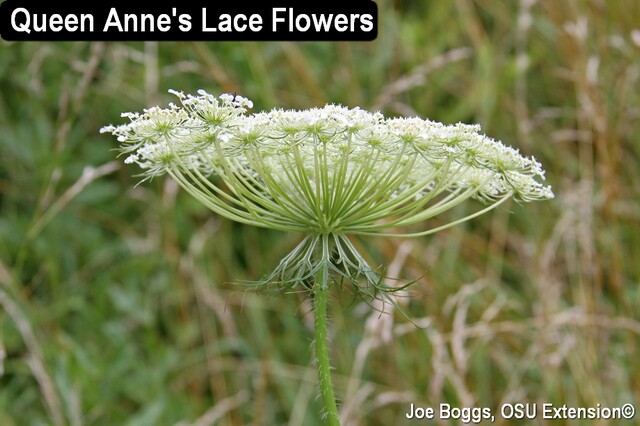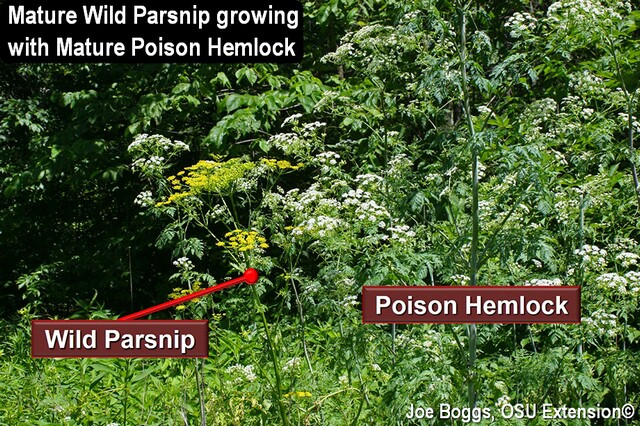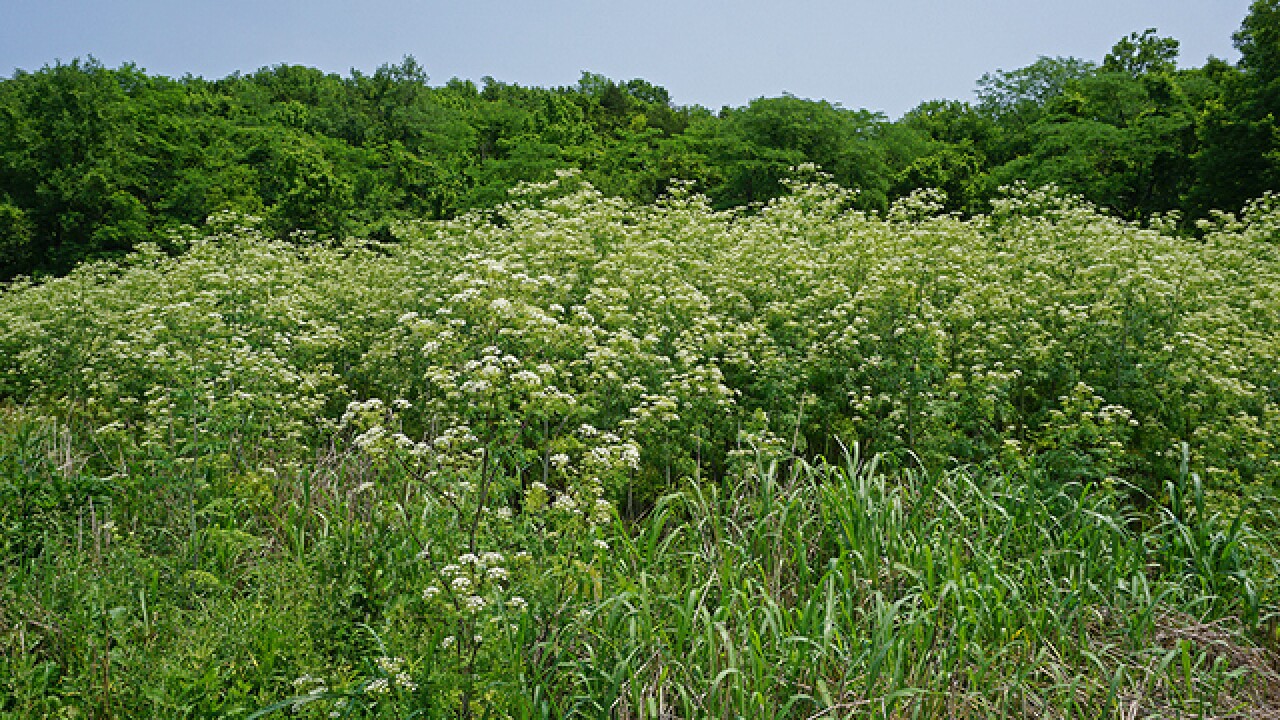GEAUGA COUNTY, Ohio — With the rainfall our state has gotten so far, it’s been a great year for plant growth, but that also means weeds and invasive plants are spreading, including some that can be harmful to humans and animals.
Poison hemlock, which Ancient Greek geeks know supposedly poisoned Socrates in 399 B.C., was brought over to the United States in the 1800s as a winter plant and has since spread to nearly every contiguous state in the nation, according to Erik Draper, commercial horticulture educator for The Ohio State University extension office in Geauga County.

Poison hemlock looks similar to Queen Anne’s lace or garden angelica, with an umbrella shape of white flowers, but hemlock has purple spots on its stems and is most prevalent in places like ditches, waste areas and runoffs, Draper said.

Poison hemlock has toxic compounds that can lead to respiratory failure or even death in mammals. It’s possible to have the toxins enter the body through the eyes or nasal passages.
“Typically, it shuts down your muscles’ ability, your ability to breathe,” Draper said. “In animals, it starts to affect...their brains to their motor functions in their body, and it starts to shut that down in animals.”
If you’ve ingested poison hemlock, you may experience shortness of breath, but Draper said if you suspect you may have ingested any, seek medical attention immediately.
“Don't wait,” he said. “Just go in and say, ‘I was out weed-eating, whatever, then I got into some poison hemlock.’ Go in, and you're much better off dealing with it proactively rather than waiting to see how your body responds.”
Draper said poison hemlock is not to be confused with other harmful plants, like giant hogweed and wild parsnip, which won't cause respiratory failure but can cause painful blisters and symptoms resembling those from a burn.

Draper said hemlock is not hard to kill – you can dig it out and throw it away, just be careful while you’re doing it.
“You need to be careful because if you're out weeding and you don't have goggles on, or sometimes, you know, when you're weed-eating, something flies in your mouth, that could be problematic,” Draper said.
While poison hemlock has not resulted in any human deaths that Draper is aware of, he’s concerned this year because of how much plant growth the state has seen so far this year.
“It's just more prevalent because we've had such a great year for plant growth,” he said. “And so the patches that may have been kind of scattered the year before, I've seen patches that are probably 25, 30 feet across. In Northeast Ohio, you see it almost everywhere now, because right now you see those white flower heads. It's pretty prevalent right now.”
RELATED: Two invasive plants in Ohio can 'kill you or make you wish you were dead'










